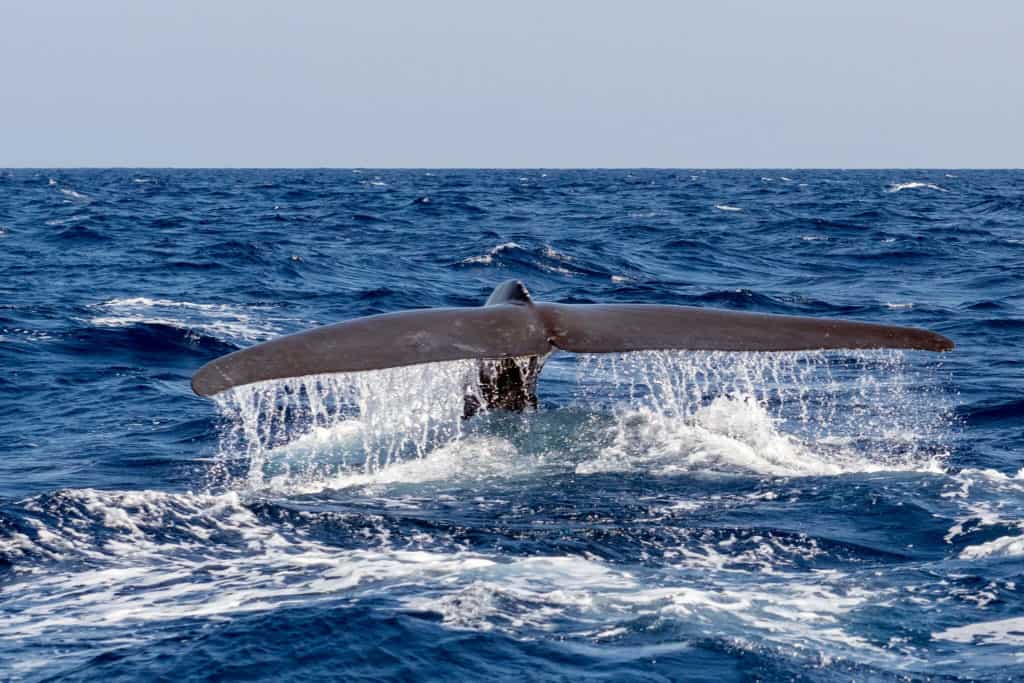Blue whales are the biggest animal to have ever existed and lived on planet earth, even bigger than the dinosaurs.
These HUGE marine animals are some of the rarest, and most breathtaking species of whale to come across and have a real magical aura about them.
In this post, we’re going to answer a popular question we get asked by our readers. Are blue whales mammals?
Yes, blue whales are mammals. They are actually the biggest mammals on earth and are more commonly known as marine mammals.
Let’s take a closer look…
What Exactly Is A Mammal?
A mammal is a warm-blooded vertebrate animal of a class that is distinguished by the possession of hair or fur, females that secrete milk for the nourishment of their young, and the birth of live young.
All mammals are classified in the Eukarya domain since their cells have nuclei. They are in the class of Mammalia in the animal kingdom.
Mammals are also vertebrates because they have a backbone. They are the smallest group of vertebrates, with only around 5,000 species of mammals known to science.
All female mammals have a specialized sweat gland called a mammary gland which produces milk through a process called lactation.
This milk is used to nourish their young and is rich in fat and protein, allowing the young to grow big and strong as well as providing them with immunity from bacteria.
Why Are Blue Whale Mammals?
Blue whales, like all mammals, are born with hair, breathe air, and produce milk to feed their young.
Mammals that live in the ocean are often referred to as marine mammals, with the blue whale being the biggest of them all.
Just like land mammals, blue whales possess several characteristics that are necessities in mammalian species.
These include:
Giving Birth
Blue whales carry their young internally and provide their young with nutrients through an umbilical cord until their calf is born.
Once born, they nurse their young for many months like any other mammal to ensure it has the best chance of survival in the wild.
Breathing Air
Like all mammals, the blue whale relies on oxygen in order to survive, even whilst living in the ocean.
Unlike fish, the blue whale does not have gills and must surface in order to release carbon dioxide from its lung and breath in oxygen.
Blue whales have some of the largest lungs in the animal kingdom and are able to hold their breath for an impressive 90 minutes.
Warm-Blooded
Being warm-blooded means that blue whales receive their energy by consuming a huge amount of food every single day.
In fact, during feeding season blue whales will eat around 40 million krill each day to get the energy they need to store fat and survive.
To protect themselves against the cold, most mammals develop a layer of fat, or in the whale’s case, blubber which protects them from the freezing waters and keeps them insulated.
Producing Milk
Mammals nurse their young and feed them with nutrient-rich milk during the early stages of life until they can eat solid food.
Blue whales nurse their calves for between four and six months. Their milk is around 53% fat content which allows calves to grow at a rapid rate.
Having Hair
Like all mammals, blue whales actually have hair, however, it is not visible and only visible in some species like the humpback whale.
The goofball-sized lumps on a humpback whale’s head are actually hair follicles.
Final Thoughts
So, are blue whales mammals? Yes, they are.
Blue whales are born with hair, they breathe air and they also produce milk to feed their young. They are the largest mammals to live on planet earth.
This species of whale, like all whales, give birth to their very large calves that they nurse for six or seven months.
Blue whales are marine mammals that belong to the cetacean family, which includes dolphins, porpoises as well as whales.
Hopefully, this post has been helpful and you now understand a little more why blue whales are mammals.
Thanks for taking the time to read this post and feel free to stick around to learn more about whales.

Hi, I’m George – the founder of MarinePatch. I created this blog as marine wildlife has been my passion for many years. I’ve spent over a decade in the marine wildlife industry and spent years out in the field conducting research. In today’s modern world, an online blog is the best place for me to share my findings and reach as many people as possible to help educate and inspire others. Enjoy your time here and you’re welcome back anytime!

